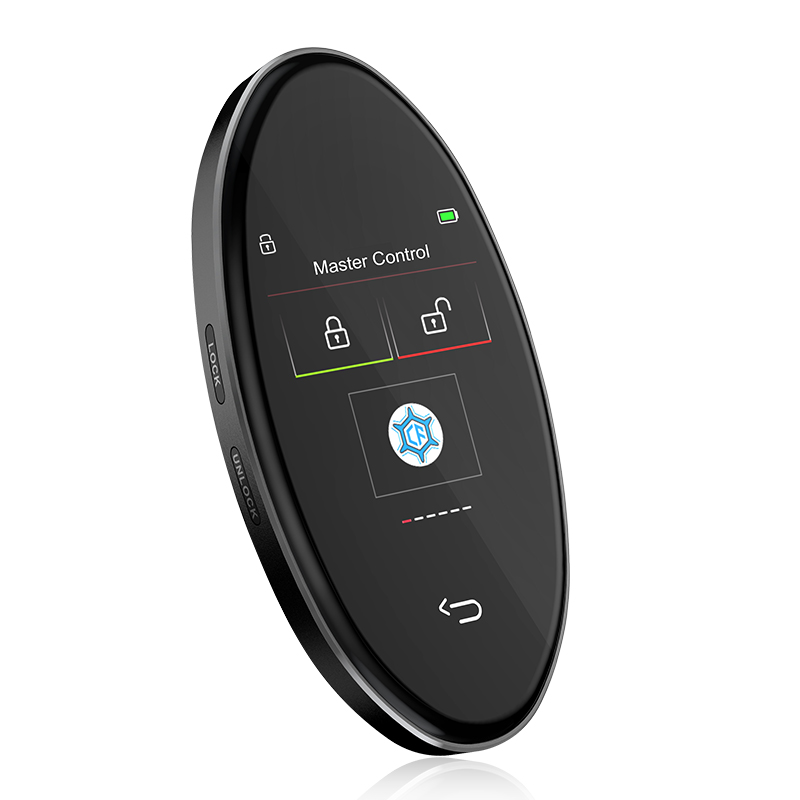2024 Comparison of Keyless Entry Auto Systems: Aftermarket vs OEM

Keyless Entry Auto Overview
The introduction of keyless entry systems has significantly transformed the automotive industry, providing vehicle owners with both convenience and heightened security. It is essential for individuals to grasp the disparities between aftermarket and OEM keyless entry systems to make well-informed choices. Delving into the advantages and installation procedures of keyless entry systems can assist car owners in selecting the most suitable option for their vehicles.
Keyless Entry System Basics
Understanding Keyless Entry Technology
Keyless entry technology operates through the transmission of radio waves between a vehicle and a key fob, allowing for seamless access without the need for traditional keys. The evolution of this technology has revolutionized the automotive industry, providing enhanced security and convenience for vehicle owners.
Types of keyless entry technologies include passive keyless entry (PKE) and remote keyless entry (RKE). PKE systems automatically unlock the vehicle when the key fob is in close proximity, while RKE systems require the user to press a button on the fob to lock or unlock the vehicle. These advancements have significantly improved user experience and overall vehicle security.
Keyless Entry Features and Functionality
Keyless entry systems offer an array of features designed to enhance convenience and security for vehicle owners. Remote key fobs enable users to lock or unlock their vehicles from a distance, providing added convenience in various situations. Additionally, push-button start functionality eliminates the need for inserting keys into the ignition, streamlining the process of starting the vehicle.
Moreover, keyless entry access allows for easy entry into the vehicle without physically using a key. This feature not only adds convenience but also reduces the risk of accidentally locking keys inside the car. Overall, these functionalities contribute to a seamless and secure driving experience for modern vehicles.
Aftermarket Keyless Entry Installation Process
Installation Steps for Aftermarket Keyless Entry
When considering the installation of aftermarket keyless entry systems in vehicles, it is essential to follow a systematic approach to ensure a successful outcome. Here are the general steps involved in the installation process:
Assessment of Vehicle Compatibility: Before beginning the installation, it's crucial to verify that the chosen aftermarket keyless entry system is compatible with the specific make and model of the vehicle. This ensures seamless integration and functionality.
Gathering Tools and Materials: The installation process typically requires common tools such as wire cutters, electrical tape, and screwdrivers. Additionally, the aftermarket keyless entry kit will contain specific components necessary for the installation.
Locating Access Points: Identifying access points within the vehicle where components such as control modules and wiring harnesses will be installed is an important initial step.
Wiring Installation: This step involves connecting the wiring harnesses according to the manufacturer's instructions. It's essential to ensure proper insulation and secure connections to prevent electrical issues.
Mounting Control Modules: Mounting control modules in strategic locations within the vehicle allows for easy access and optimal functionality.
Programming Procedures: After completing the physical installation, programming procedures are carried out to synchronize the new keyless entry system with the vehicle's existing electronics.
Benefits of Aftermarket Keyless Entry Installation
Opting for an aftermarket keyless entry system offers several advantages for vehicle owners:
Customization: Aftermarket systems provide opportunities for customization based on individual preferences, allowing users to tailor features according to their specific needs.
Affordability: Compared to OEM systems, aftermarket installations are often more cost-effective while still offering advanced functionalities.
Enhanced Convenience: The addition of keyless entry capabilities enhances overall convenience by streamlining access to vehicles and simplifying operation.
Expanded Security Features: Many aftermarket keyless entry systems come equipped with advanced security features that can further protect vehicles from unauthorized access and theft attempts.
Comparing OEM and Aftermarket Keyless Entry
Advantages of OEM Keyless Entry Systems
Original Equipment Manufacturer (OEM) keyless entry systems offer unique advantages that cater to specific preferences and requirements of vehicle owners. Some of the key benefits and features of OEM keyless entry systems include:
Seamless Integration: OEM keyless entry systems are designed to seamlessly integrate with the vehicle's existing electronics and components, ensuring optimal performance and compatibility.
Quality Assurance: As OEM systems are produced by the vehicle manufacturer, they undergo rigorous testing and quality control measures to meet industry standards, providing users with reliable and durable solutions.
Factory Warranty Coverage: When opting for OEM keyless entry systems, users benefit from factory warranty coverage, offering added peace of mind regarding potential issues or malfunctions.
Enhanced Resale Value: The inclusion of an OEM keyless entry system can positively impact the resale value of a vehicle, as it demonstrates authenticity and adherence to manufacturer specifications.
Factors to Consider When Choosing Between OEM and Aftermarket Systems
When evaluating the choice between OEM and aftermarket keyless entry systems, several crucial factors should be taken into account:
Quality Standards: OEM systems adhere to strict quality standards set by the original manufacturer, ensuring reliability and compatibility. On the other hand, aftermarket systems may vary in terms of quality and performance.
Compatibility: Vehicle owners must consider the compatibility of both options with their specific make and model. While OEM systems are designed for seamless integration, aftermarket systems may require additional modifications for compatibility.
Warranty Coverage: Assessing warranty coverage is vital. While OEM systems come with factory warranty protection, aftermarket offerings may have varying warranty terms that require careful consideration.
Cost Considerations: Cost differentials between OEM and aftermarket keyless entry systems should be weighed against the desired features, quality assurance, and long-term benefits for informed decision-making.
Keyword Usage:
Keyless entry benefits: 1
Keyless entry technology: 1
Keyless Entry Security Technologies
Enhanced Security Features of Keyless Entry Systems
Keyless entry systems incorporate advanced security features to safeguard vehicles from potential theft and unauthorized access. These security measures are designed to provide peace of mind to vehicle owners while ensuring the protection of their valuable assets.
One prominent security feature is the use of rolling codes, which generate a new access code each time the key fob is used. This dynamic code system prevents unauthorized individuals from intercepting and replicating the code, significantly reducing the risk of vehicle theft through electronic hacking methods.
Additionally, some keyless entry systems utilize encrypted communication protocols between the key fob and the vehicle's control module. This encryption enhances data security by preventing unauthorized access to the vehicle's electronic systems.
Furthermore, certain keyless entry systems are equipped with motion sensors that can detect any attempt to tamper with or forcibly enter the vehicle. These sensors trigger alarms or alert notifications to deter potential intruders and notify owners of suspicious activity.
Moreover, biometric authentication features such as fingerprint recognition or facial recognition may be integrated into advanced keyless entry systems, adding an extra layer of security by ensuring that only authorized individuals can access the vehicle.
The integration of these enhanced security features underscores the commitment of keyless entry technology to providing robust protection for modern vehicles, offering both convenience and peace of mind to vehicle owners.
Keyless Entry System Vulnerabilities and Solutions
While keyless entry systems offer advanced security features, they are not immune to vulnerabilities. One common vulnerability is relay attacks, where hackers use devices to amplify signals from a key fob inside a home to unlock and start a nearby vehicle. To mitigate this risk, storing key fobs in signal-blocking pouches or containers can prevent unauthorized signal amplification.
Another vulnerability arises from jamming devices that interfere with the communication between a key fob and a vehicle. Implementing frequency-hopping spread spectrum (FHSS) technology in keyless entry systems can counteract jamming attempts by rapidly switching frequencies during communication.
Furthermore, some older models of keyless entry systems may be susceptible to brute force attacks through repeated attempts at guessing access codes. Upgrading to newer models with stronger encryption algorithms and multi-factor authentication can address this vulnerability effectively.
By acknowledging these vulnerabilities and implementing appropriate solutions, vehicle owners can enhance the overall security of their keyless entry systems while enjoying the benefits of modern automotive technology.
Keyless Entry Auto: Making the Right Choice
Navigating the realm of keyless entry systems empowers vehicle owners to make well-informed decisions aligned with their individual needs and preferences. When considering the most suitable keyless entry system for their vehicles, individuals should take into account various factors, including installation processes, available features, and security enhancements. By exploring the diverse options in the market, car owners can select the keyless entry system that best complements their automotive experience.
In summary:
Understanding the nuances of keyless entry systems is crucial for informed decision-making.
Factors such as installation, features, and security should guide individuals in selecting the most suitable system.
Exploring diverse options ensures that individuals can find a keyless entry system tailored to their specific automotive needs.
See Also
Exploring the Top Thermal Image Drones of 2024: Which is the Best?
Comparing Car DVD Players and MP5: Choosing the Ideal Car Multimedia Player
Night Vision Drones vs Thermal Drones: Optimal Choice for Aerial Surveillance in 2024
Enhancing Safety and Security: Implementing Vehicle Thermal Camera Systems for Businesses in 2024
Mastering Drone Thermal Vision: Evaluating Various Models for Optimal Performance
Contact Us: Ms. Coco Huang
E-mail: sales@iasun.cn
WhatsApp/Wechat: +86 13510421923

